Not even Cecilia Alemani, the current artistic director of the 59th Venice Biennale, at the time of her curatorship for the Italian Pavilion in 2017, risked the choice of the sole artist for one of the largest and most conspicuous departments of the entire Serenissima kermesse. A risk in no way diminished in today’s situation, yet ridden firmly by the organizers and the certainly good curator Eugenio Viola who did not wait a few months to announce the exclusive recruitment of Gian Maria Tosatti.
Regardless of the artistic caliber of the Viola-Tosatti pair, possessing all the credentials to justify their presence, why would the single name for the national pavilion represent such a perilous venture? The reasons do not end only at the voluminousness of the location, as many as two portions of the nineteenth-century structure of the Tese delle Vergini for a total area of about 1,800 square meters, rather they are identified in the curatorial difficulty of concentrating in a single artistic individuality all the historical and cultural heterogeneity of the Belpaese, often spoiled by political and celebratory overtones.
Essentially, History of the Night and Fate of Comets should be analyzed with more attention to the design statement, however much formal balance can never be disregarded at such high levels of an International Exhibition. Taking an avowed cue from the article written by Pier Paolo Pasolini for Corriere della Sera in February 1975, Il Vuoto di Potere in Italia (also known as The Fireflies’ Article), Tosatti’s project appropriates a learned but accessible basis to create a mise en scene that is intended to be both poetic and collectivist. Aims achieved?
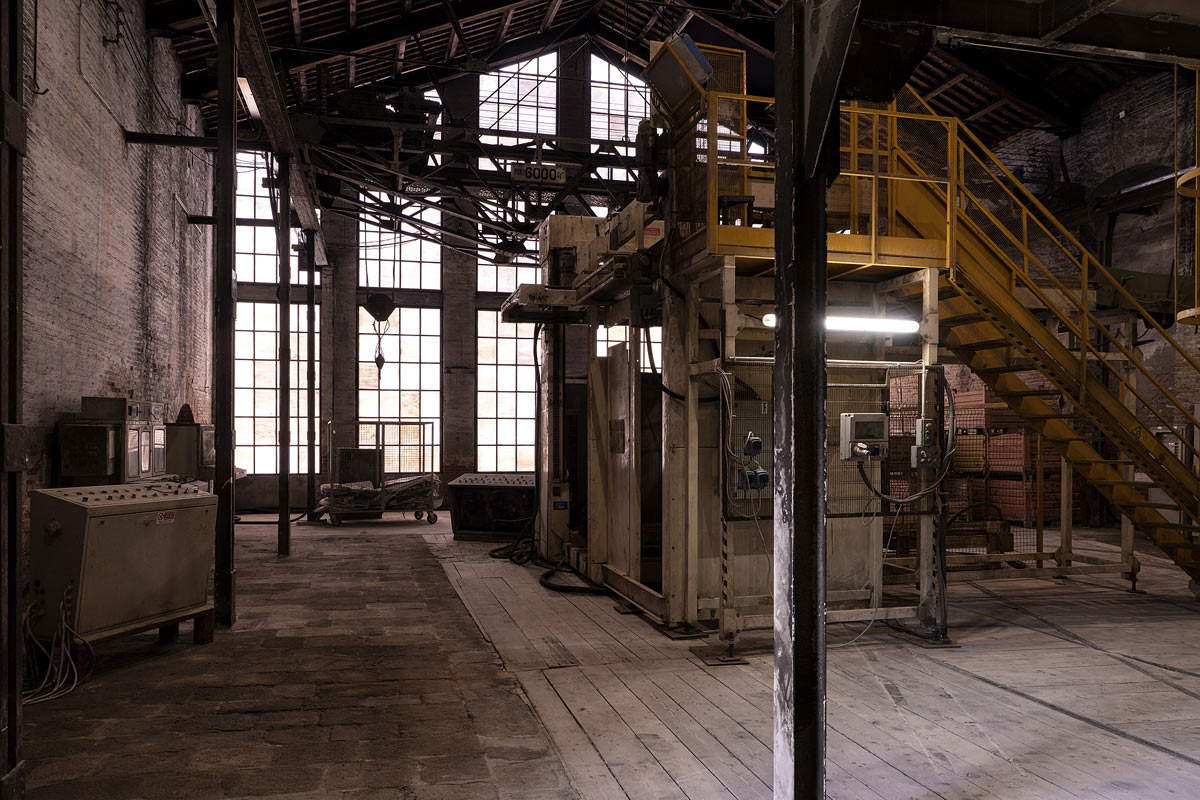

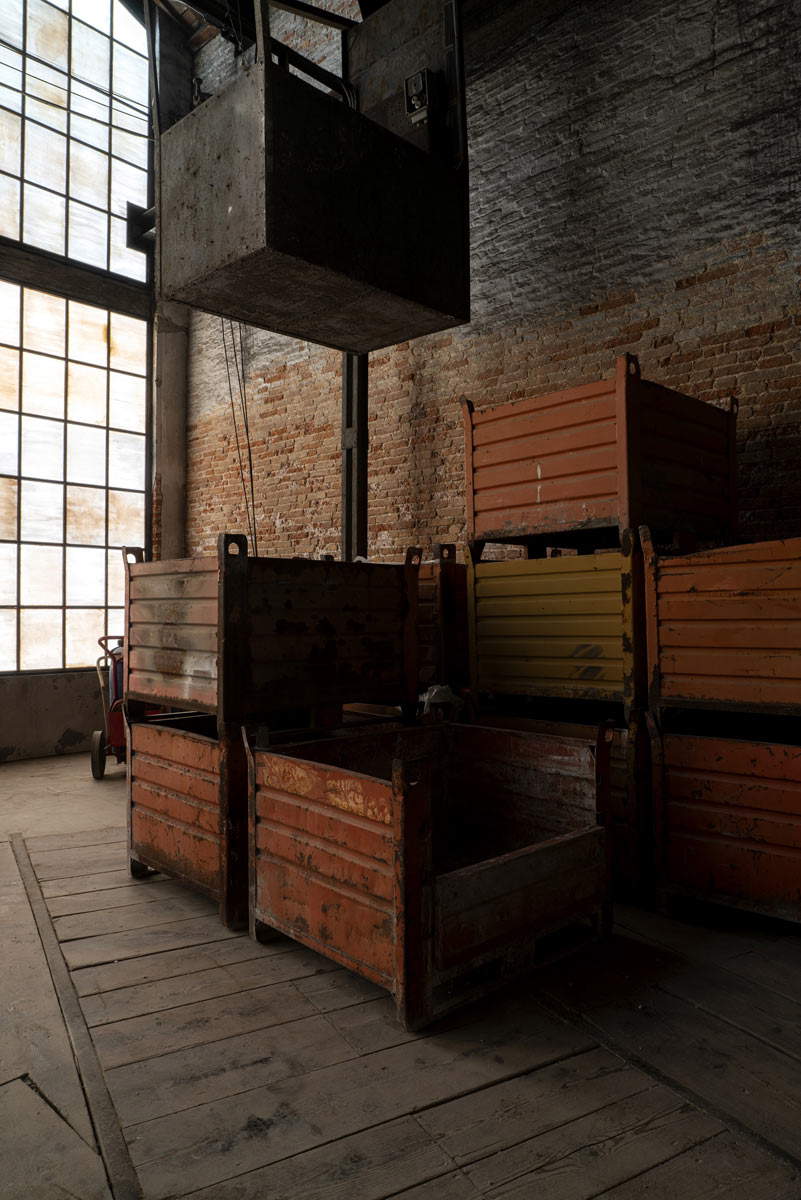
“Plundering” the structure of Pasolini’s publication, it is good to offer a little chronological account that led to the construction of the Italian pavilion’s exhibition. As mentioned, the choice of Viola and Tosatti was not in question as such, rather on the effectiveness of a single point of view to describe a panorama as complex as that of our peninsula, moreover loaded with a historical moment, that of the pandemic, which echoes globally. There arises, indeed, the suspicion of an urgency to the recall and active participation of the public, so much so as to promote initiatives with the flavor of “firsts,” such as precisely the authorialunicum of the Italian Pavilion (in the foreignophilic wake of the solo shows of France, Germany or the United States) or the first time of a female artistic director to follow theentire Biennale; these premises, admittedly, do not directly touch the work of the artist and curator, yet they have fostered a climate of excessive expectation harmful to fruition, seasoned by an eccentrically unusual media fanfare.
The “disappearance of the fireflies,” to which the Pasolinian reference is painfully topical, symbolizes an absolute void, a poetic paradox accepted without any sensitive trauma, an inexorable metaphor of postwar Italian conformism: today this absence reverberates deafly in the image of self-censorship, of a losing criticism because it cannibalizes those traditional values of inquiry to make them its own, without digesting them, without pondering them.

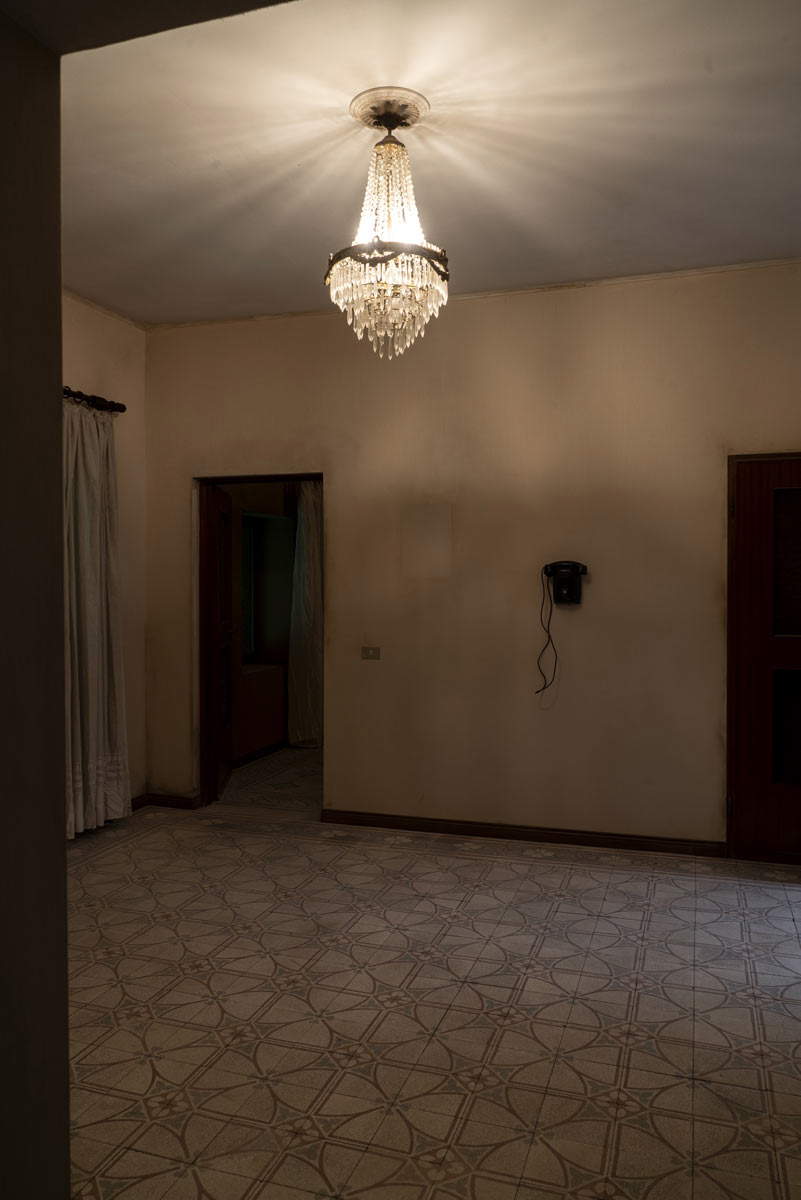

Pointing to the exhibition, Tosatti relies on the peculiarities of theater to recreate a prospectus in two acts: the History of Night and the Destiny of Comets, precisely. Night is a massive scenic elaboration that camouflages factory scenarios typical of Italian industry: entering one at a time (at the artist’s behest), one is greeted by a familiar (and irritating) proscenium with a timer to “clock in,” replacing the monumental metal doors of the entrance. One immediately grasps the bias toward the world of work, or rather, the working-class world, affirmed in the later rooms with spiraling desuetude machinery and a tidy, grim arrangement of sewing machines abandoned in the cold neon light. The specified night has a dreamlike character; it is disillusionment with the “Italian miracle” of the 1960s, poisoned, in the succession of decades, by regrettable news events about white deaths, alienation, and the failure of promises made.
Italy, then, is not represented or interpreted stylistically, but intellectually decontextualized with “minimal shifts,” to use curator Eugenio Viola’s words, reconstructing, almost intact, recovered environments. The phenomenological operation, however, sins precisely on the excessive authorial detachment, seasoned by an inordinate citationism (Kounellis’s sewing machines, Parmiggiani’s absent paintings... ) too evident to be unconscious. It is not possible to call in an example like Quentin Tarantino to justify the scattered references, because Tosatti’s work lacks the sublimation of montage, unrealizable in a theatrical machine where actors and spectators coincide. Even acknowledging a credible formal juxtaposition, it is still a simulation, “more real than real,” which appropriates the time-given sacredness of the various machines to make them semantic fetishes propelling memories. Indeed, curatorial forcings persist, such as the actual role of the viewer: if “human presence is banished,” how can the visitor become “almost unwittingly, a voyeur by proxy”?
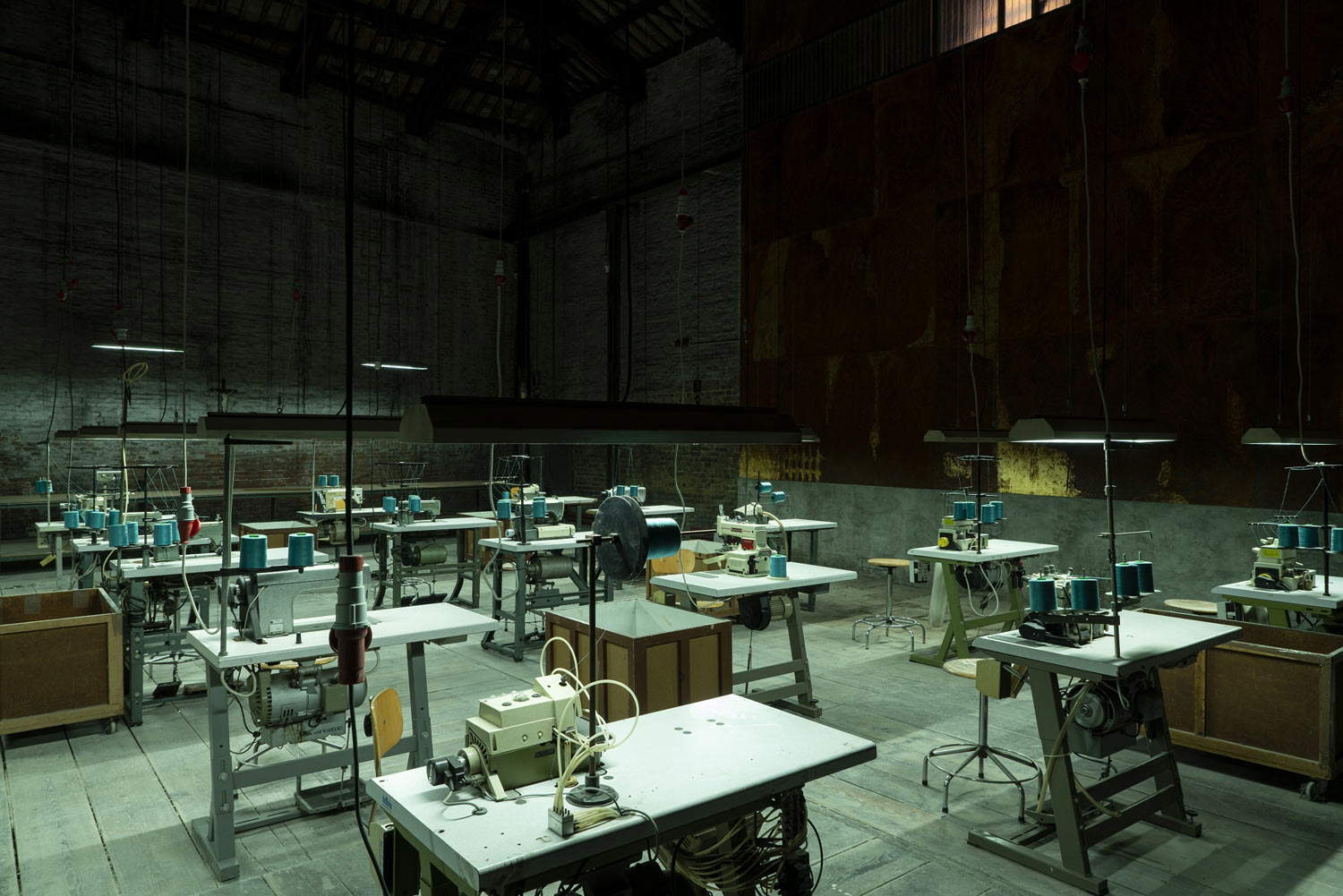

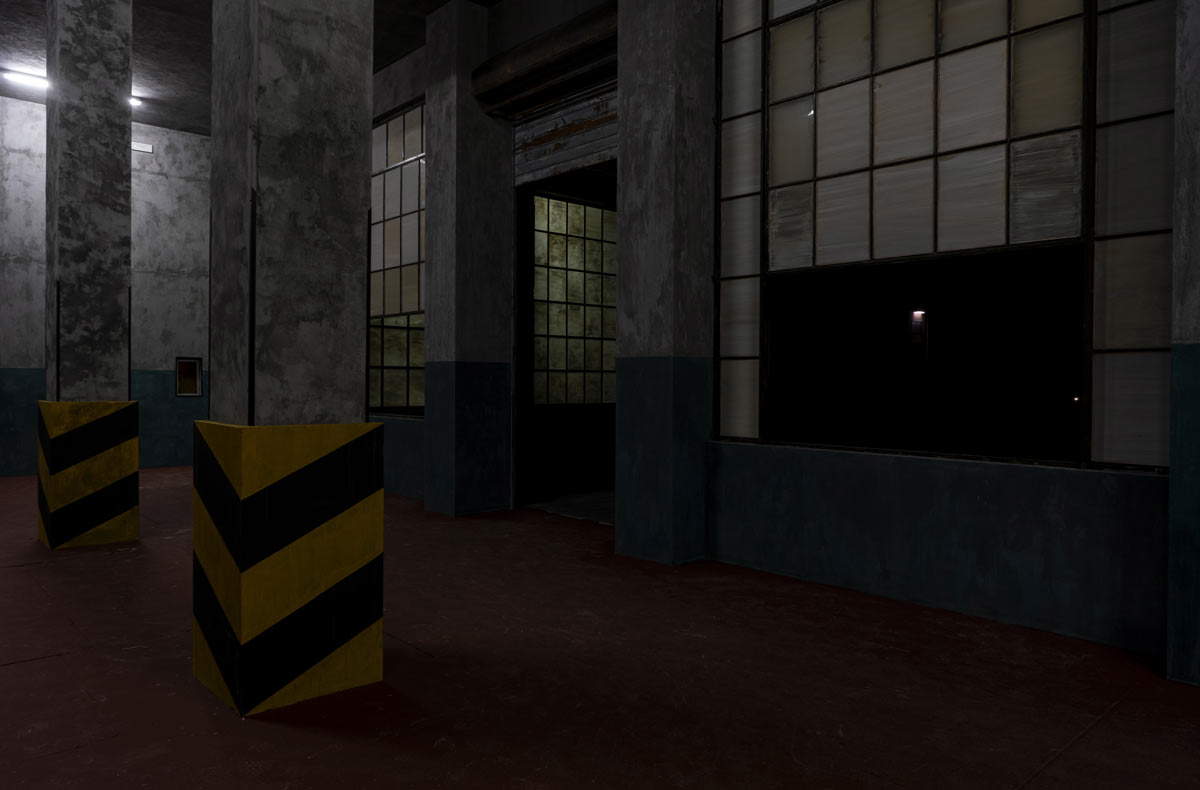
The second act seeks to resolve the disarming vacuity of the reconstructed industrial landscape in an ecological key, with a comforting and cathartic vacuity of a cargo bay projected toward a subconscious expanse of nocturnal water, a vision shattered by scattered intermittent and continuous luminescences. Obviating the similarity with Giorgio Andreotta Calò’s 2017 installation at the same location, Comet Destiny focuses on the eschatological motif of the universal deluge as an epigraphic counterpoint to the initial Pasolinian nihilism, calling into question, on this occasion, Like Fireflies. For a Politics of Survival by Georges Didi-Huberman (2010), a text spawned by taking its cue from the Italian intellectual’s very article: the reading of Didi-Huberman is thus a hermetic motion of hope, a push to get out of the soft resignation given that, despite everything, some vague fireflies would survive.
Even in the second location, the formal creaks depend fundamentally on imprecise conceptual “oiling”: first of all, the prophetic guise intended for Pasolini is gratuitous and forced to allegorically emphasize the metaphor of fireflies in a naturalistic ending not exactly pursued in the 1975 article. Stepmotherly and inexorable Nature is a theme dictated, too, more by the urgency of finding an adequate post-pandemic image, rather than reflecting on an overcoming of the image, as Didi-Huberman himself would suggest. It must be acknowledged, though, a certain cinematic effect, so persistent as to rewrite the whole visual device (indeed, already in the machinery room a tourist poster of Peru was noticeable, a very clear reference to the film Madonna che silenzio c’è stasera starring Francesco Nuti, whose Prato origin semantically increases the poetic references toward industrial invasion on Italian provincial life) to a metaphysical escape. Again Didi-Huberman, in a 2014 essay devoted to Pasolini’s documentary film La Rabbia (1963), recalls, in fact, how the poet and director from "develop[ed] the powerful motif of a ’cinema of poetry’ that would be, fundamentally, a cinema of survival[cine?ma de survivance]: a cinema of vital energy confronted directly with the disappearance of things and beings.“ However, success on the aesthetic level, as on the ethical, political and anthropological level is ”a question of temporal rhythm, [...] since it is constituted - reconstituted and reinvented, disassembled and reassembled - in the operation of montage."
In essence, Tosatti’s operation, certainly immersive, does not invest the audience with adequate awareness, does not inculcate the catharsis sought, because it is deficient on montage, understood as the experiential fluidity of the industrial and post-industrial milieu, achieving an exaggeratedly real re-presentation, to the point of becoming reality. Can one speak of art without the human?

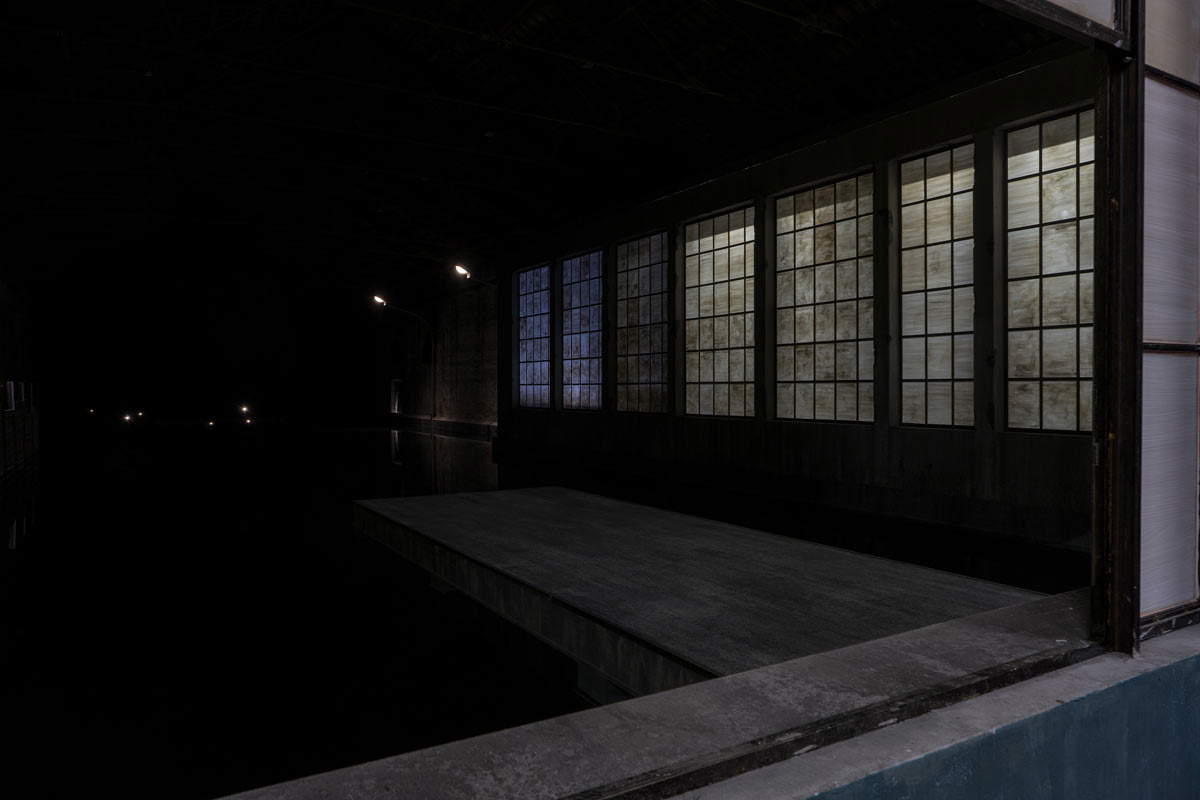
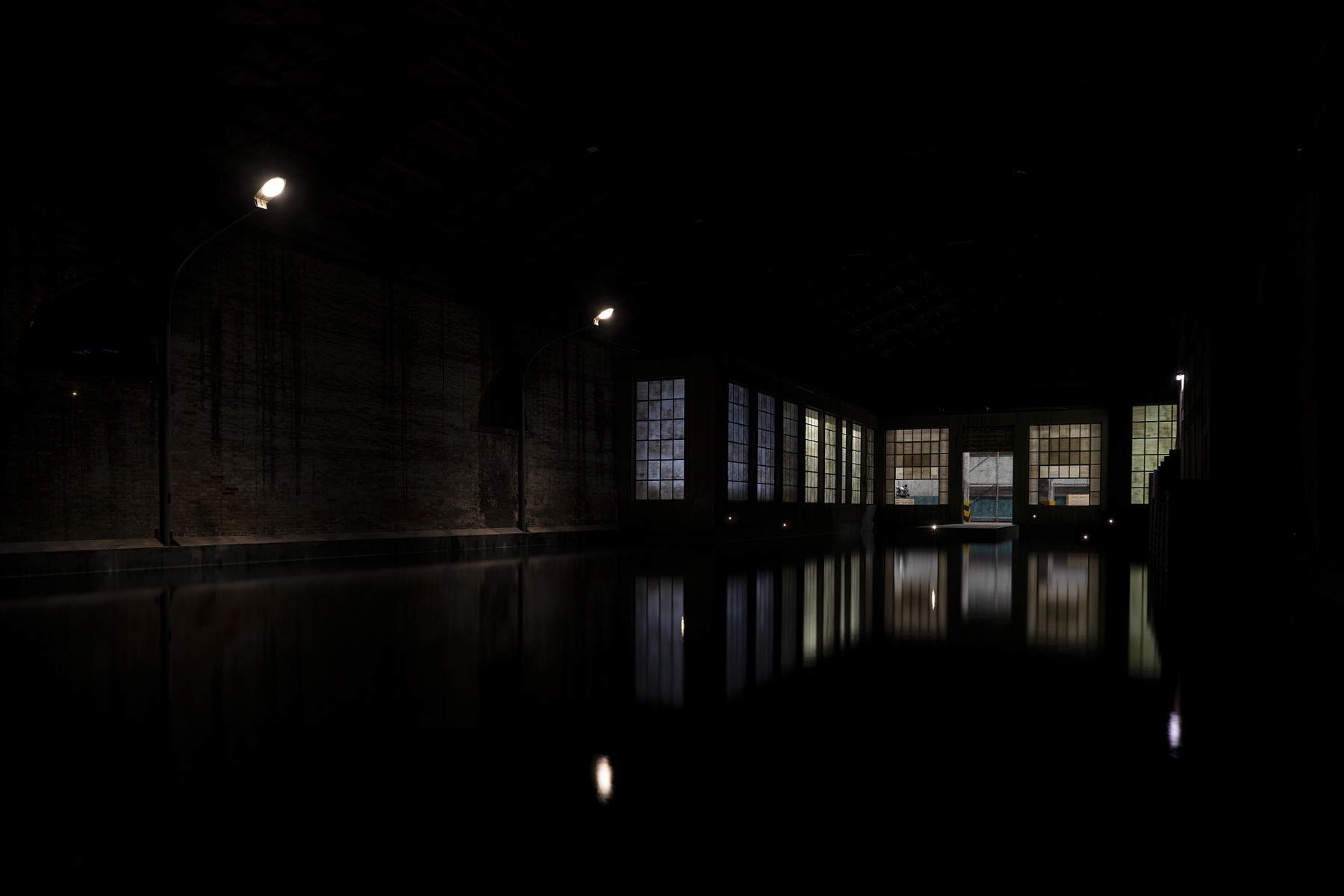
The entire apparatus offered by the Italian Pavilion, as mentioned, is filled with artistic references, disorienting from the cinematic and visual to the literary: the narrative layout recalls Pirandello’s novella Ciàula discovers the Moon, without, moreover, dissolving into the totality of nature (in the tale symbolized by the final liberating cry) as the authors hope. Given Eugenio Viola’s references, most evident in the catalog, to theAeneid, let us indulge in a posthumous note to the Georgics, particularly on the myth of Aristeus: the son of Apollo and Cyrene, he was the legendary primus mellarius who, having fallen in love with the nymph Eurydice, caused her accidental death by a snakebite as she escaped his lecherous ambushes. The coven of nymphs took revenge on Aristeus by destroying all his hives and dispersing their swarms. Thus it was that the mother Cyrene instructed her son in an atoning rite involving the killing and rotting of the cattle in her flock. The bees returned and the human-god was forgiven.
The Russian critic Wladimir Weidlé published an essay titled Les abeilles d’Aristèe in 1936 , using the bees as a metaphor for a crisis in contemporary art and the need for a spiritual sacrifice (a liberating weeping, if you will) to allow the bees to rise from the corpse of beauty we are secularly dragging. So timely does this warning resonate that it seems evident how easy it still is to mistake fireflies for lanterns.
Warning: the translation into English of the original Italian article was created using automatic tools. We undertake to review all articles, but we do not guarantee the total absence of inaccuracies in the translation due to the program. You can find the original by clicking on the ITA button. If you find any mistake,please contact us.